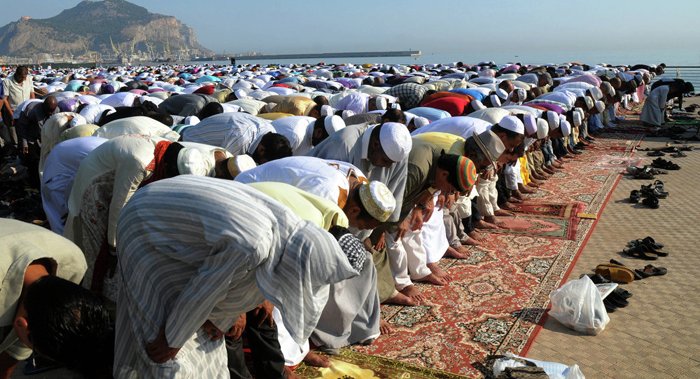Key differences between Shiite and Sunni Muslims

Sunni and Shiite Muslims share fundamental Islamic beliefs and articles of faith and are the two main subgroups of Islam. They differ, however, and that separation originated initially, not from spiritual distinctions, but from political ones. Over the centuries, these political differences have generated a number of different practices and positions that have taken on spiritual significance.
The five pillars of Islam
The five pillars of Islam refer to religious duties to God, personal spiritual growth, care for the less fortunate, self-discipline and sacrifice. They provide a framework or framework for a Muslim's life, just as pillars do for buildings.
A matter of leadership
The division between Shiites and Sunnis dates back to the death of the prophet Muhammad in 632. This event raised the question of who would take command of the Muslim nation.
Sunnism is the largest and most orthodox branch of Islam. The word Sunn, in Arabic, derives from a word that means "one who follows the traditions of the Prophet".
Sunni Muslims agree with many of the Prophet's companions at the time of his death: that the new leader should be elected from among those capable of the job. For example, after the death of the prophet Muhammad, his dear friend and adviser, Abu Bakr, became the first caliph (successor or deputy of the prophet) of the Islamic nation.
On the other hand, some Muslims believe that the leadership should have remained within the family of the Prophet, among those specifically named by him or among the imams nominated by God himself.
Shiite Muslims believe that after the death of the prophet Muhammad, the leadership should have passed directly to his cousin and son-in-law, Ali bin Abu Talib. Throughout history, Shiite Muslims have not recognized the authority of elected Muslim leaders, choosing instead to follow a line of imams whom they believe were named by the prophet Muhammad or by God himself.
The Shia word in Arabic means group or group of support people. The commonly known term is shortened by the historian Shia't-Ali, or "the Party of Ali". This group is also known as Shiites or followers of Ahl al-Bayt or "People of the family" (of the Prophet).
Within the Sunni and Shiite branches, you can also find a number of seven. For example, in Saudi Arabia, Sunni Wahhabism is a prevalent and Puritan faction. Likewise, in Shi'ism, the Druze are a rather eclectic sect residing in Lebanon, Syria and Israel.
Where do Sunni and Shiite Muslims live?
Sunni Muslims represent 85% of the majority of Muslims worldwide. Countries like Saudi Arabia, Egypt, Yemen, Pakistan, Indonesia, Turkey, Algeria, Morocco and Tunisia are predominantly Sunni.
Significant populations of Shiite Muslims are found in Iran and Iraq. Large communities of Shiite minorities are also found in Yemen, Bahrain, Syria and Lebanon.
It is in areas of the world where Sunni and Shiite populations are in close proximity that conflict can arise. Coexistence in Iraq and Lebanon, for example, is often difficult. Religious differences are so rooted in culture that intolerance often leads to violence.
Differences in religious practice
Deriving from the initial demand for political leadership, some aspects of spiritual life now differ between the two Muslim groups. This includes prayer and wedding rituals.
In this sense, many people compare the two groups with Catholics and Protestants. Basically, they share some common beliefs but practice in different ways.
It is important to remember that despite these differences of opinion and practice, Shiite and Sunni Muslims share the main articles of Islamic belief and are considered by many brothers in the faith. Indeed, most Muslims do not distinguish themselves by claiming to belong to a particular group, but simply prefer to call themselves "Muslims".
Religious leadership
Shiite Muslims believe that the Imam is sinless by nature and that his authority is infallible because he comes directly from God. Therefore, Shiite Muslims often worship imams as saints. They make pilgrimages to their tombs and shrines in the hope of divine intercession.
This well-defined clerical hierarchy can also play a role in government affairs. Iran is a good example where the imam, and not the state, is the supreme authority.
Sunni Muslims argue that there is no basis in Islam for a privileged hereditary class of spiritual leaders and certainly no basis for the veneration or intercession of the saints. They argue that community leadership is not a birthright, but rather a trust that is earned and that can be given or taken away by people.
Religious texts and practices
Sunni and Shiite Muslims follow the Qur'an, as well as the hadiths (sayings) of the prophet and the sunna (customs). These are basic practices in the Islamic faith. They also adhere to the five pillars of Islam: shahada, salat, zakat, sawm, and hajj.
Shiite Muslims tend to feel animosity towards some companions of the prophet Muhammad. This builds on their positions and actions during the early years of discord about community leadership.
Many of these companions (Abu Bakr, Umar ibn Al Khattab, Aisha, etc.) have narrated traditions about the life and spiritual practice of the Prophet. Shiite Muslims reject these traditions and do not base any of their religious practices on the testimony of these individuals.
This naturally entails some differences in religious practice between the two groups. These differences affect all the detailed aspects of religious life: prayer, fasting, pilgrimage and more.